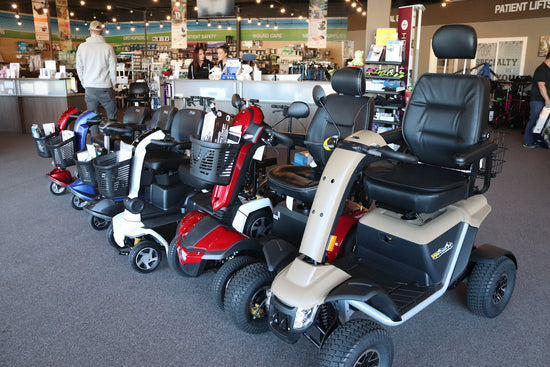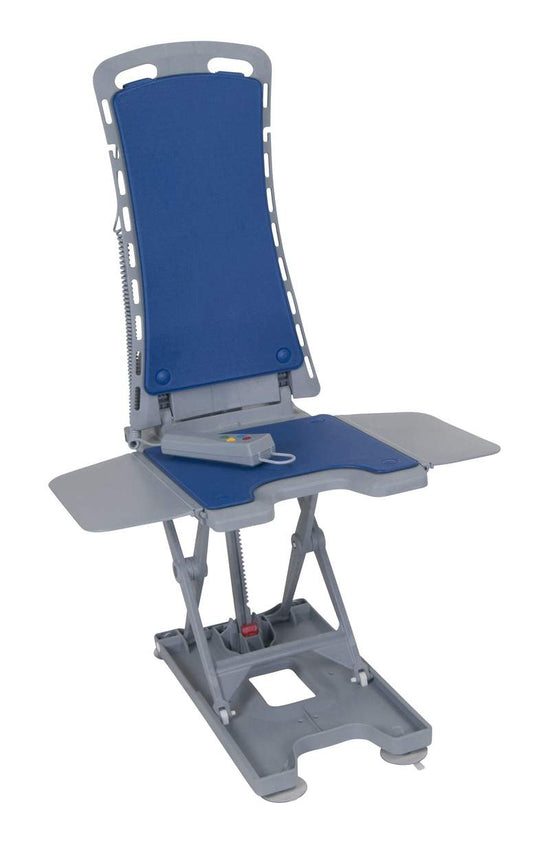Mobility is a crucial aspect of maintaining independence and quality of life, especially as we age or face physical challenges. Canes and crutches are two prevalent mobility aids designed to provide support and stability for individuals dealing with various conditions or recovering from injuries.
Despite the reluctance some may have in using such aids due to societal stigmas or concerns about dependence, the benefits they offer are significant. In this blog post, we will delve into the advantages of employing canes and crutches as mobility aids, and how they can enhance the daily lives of those who need them.
Understanding the need for a mobility aid: identifying signs and symptoms
Recognizing the signs that you or a loved one may require a mobility aid is crucial in maintaining independence and overall well-being. Mobility aids like canes and crutches can alleviate pain, provide stability, and prevent potential injuries. Here are some key signs and symptoms to look out for:
- Decreased Balance: Struggling to maintain balance while walking or standing, or experiencing frequent falls.
- Persistent Pain: Chronic pain in your legs, hips, or back, which worsens with movement or weight-bearing activities.
- Fatigue: Experiencing excessive tiredness or difficulty completing daily tasks due to limited mobility.
- Joint Instability: Noticeable weakness or instability in the joints, particularly in the knees or ankles.
- Reduced Mobility: Difficulty navigating uneven surfaces, stairs, or inclines, leading to increased reliance on others for assistance.
If you observe any of these signs, consult a healthcare professional for guidance on selecting the appropriate mobility aid.
How to choose the right mobility aid: canes vs. crutches
Selecting the appropriate mobility aid is essential for ensuring comfort, safety, and independence. When deciding between canes and crutches, consider the following factors:
- Degree of Support Needed: Canes provide partial weight-bearing support, while crutches offer more substantial assistance for those with significant mobility limitations or non-weight-bearing injuries.
- Comfort and Ease of Use: Canes are generally easier to use and less cumbersome than crutches, making them suitable for long-term use. Crutches may require more upper body strength and coordination.
- Type of Injury or Condition: Canes are ideal for individuals with mild to moderate balance issues, arthritis, or localized joint pain. Crutches are better suited for those with leg injuries, fractures, or post-surgical recovery.
- Duration of Use: Canes are typically used for ongoing support, while crutches are often temporary solutions during injury recovery.
Consult your healthcare professional for personalized advice on choosing the right mobility aid for your specific needs.
Proper use of canes and crutches: techniques, posture, and gait
To maximize the benefits of using a mobility aid, it's important to practice proper techniques, maintain correct posture, and develop a safe gait. Here are some tips for using canes and crutches effectively:
Canes:
- Hold the cane on the opposite side of the affected leg for optimal support.
- Place the cane one step ahead while walking, moving it simultaneously with the affected leg.
- Maintain an upright posture and avoid leaning on the cane excessively.
Crutches:
- Adjust the crutch height and handgrips for a comfortable fit, ensuring your shoulders don't hunch when using them.
- Keep your elbows slightly bent and avoid placing pressure on the armpits.
- For a two-point gait, move one crutch forward with the opposite leg, alternating between sides.
Always consult with a healthcare professional or physical therapist for personalized guidance on using mobility aids safely and effectively.
The physical benefits of using a mobility aid: pain relief, injury prevention, and balance improvement
Incorporating mobility aid like canes or crutches can lead to significant physical benefits, enhancing the overall quality of life. Some key advantages include:
- Pain Relief: Mobility aids help distribute body weight evenly, reducing pressure on affected joints and alleviating pain from arthritis, injuries, or other conditions.
- Injury Prevention: Canes and crutches provide additional support and stability, minimizing the risk of falls and potential injuries, especially for those with balance issues or muscle weakness.
- Balance Improvement: Mobility aids improve proprioception, or the body's awareness of its position in space, leading to better balance and coordination during movement.
By offering these physical benefits, canes and crutches enable individuals to maintain their independence and participate in daily activities with increased comfort and confidence. Consult a healthcare professional for guidance on choosing the right mobility aid for your needs.
The psychological benefits of using a mobility aid: increased confidence and independence
In addition to the physical advantages, using mobility aid like canes or crutches can lead to substantial psychological benefits. These include:
- Increased Confidence: Mobility aids provide support and stability, allowing individuals to feel more secure and confident while navigating their environment. This can lead to increased participation in social events and daily activities.
- Enhanced Independence: Canes and crutches enable users to perform daily tasks with less reliance on others, fostering a greater sense of self-reliance and autonomy.
- Reduced Anxiety: The added support from a mobility aid can alleviate anxiety related to the fear of falling or experiencing pain during movement.
Embracing the use of a mobility aid can significantly improve one's mental well-being, leading to a more active and fulfilling life. Consult a healthcare professional for guidance on choosing the right mobility aid for your needs.
Types of mobility aids: canes, crutches, and their variations
Canes and crutches come in various styles and designs to cater to individual needs and preferences. Here's a brief description of each specific item from our website:
Canes
-
Flex N Go Adjustable Folding Cane with T Handle: This versatile cane offers flexibility with its folding design, making it easy to store or transport. The T-handle provides a comfortable grip and added support.

-
Heavy Duty Folding Cane Lightweight Adjustable with T Handle: Designed for durability, this heavy-duty yet lightweight cane features a folding mechanism for convenience and a T-handle for an ergonomic grip.

-
Adjustable Lightweight Folding Cane with Gel Hand Grip, Red Crackle: Combining style and function, this lightweight folding cane features a gel hand grip for added comfort and comes in an attractive red crackle finish.

-
Foam Grip Four-Point Cane: Offering enhanced stability, this four-point cane has a foam grip handle for comfort and is ideal for those who require additional support while walking.

Crutches
-
Lightweight Walking Forearm Crutches, Bariatric: These bariatric forearm crutches are lightweight and designed to accommodate users with higher weight capacities, providing reliable support and comfort.

-
Euro Style Light Weight Walking Forearm Crutch: Featuring a sleek European design, these lightweight forearm crutches offer both style and functionality for users seeking a modern mobility solution.

-
Bariatric Heavy-Duty Walking Crutches, Tall Adult: Specially designed for taller adults, these bariatric heavy-duty crutches provide robust support and durability for users with higher weight capacities.

-
Knock Down Universal Aluminum Crutches: These adjustable aluminum crutches can be easily disassembled for storage or transport, offering a versatile and convenient mobility aid option.

Consult a healthcare professional for guidance on choosing the right mobility aid for your needs.




